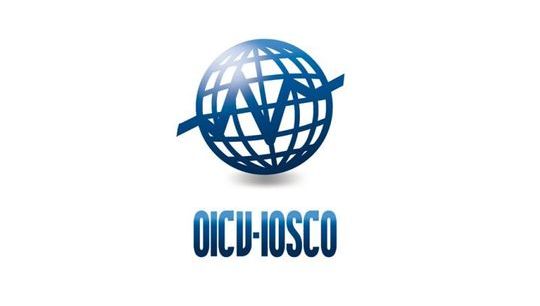Insights on ESG: No one-size-fits-all approach for alternative investment managers
Published: 15 February 2022
AIMA’s Global Investor Board (GIB) was created to further strengthen its engagement with the investor community and its growing allocator membership, and build on the work of its previously long-standing Investor Steering Committee. The GIB comprises of senior leaders at global institutional investors (representing interests in public and private markets) and provides oversight to AIMA’s investor outreach, advancing industry sound practices and education for the alternative investment industry.
With representation on the AIMA Council, the mission of the GIB is to be an advisory body to channel the ideas of the allocator community back to alternative asset managers industry participants so that they can continue to evolve and meet the changing needs of investors. Initial topics of priority identified by the GIB include: ESG (including D&I) integration; overcoming the challenges of in-person/virtual meetings in a pandemic-constrained environment; strategic relationships between GPs & LPs and the role of alternatives in a total fund portfolio.
AIMA’s Global Investor Board discussed ESG in their recent kick-off meeting. While there are many nuances and considerations, from sole versus dual mandates, from total portfolio risks versus incremental investments, from private versus public investments and asset classes, from geographical and regulatory challenges across jurisdictions to implication for macro variable variance amid varying investor preferences, this summary presents useful context on how global allocators are approaching ESG themselves and with external managers.
Key Takeaways
No one-size-fits-all approach on ESG interpretations: There are different approaches to ESG with geography, culture, politics, regulation, philosophical attitudes and stakeholders all playing a role in determining an allocator’s position.
- Geography: Some countries are still more focused on Governance (Japan, South Korea), while others more focused on E (Singapore, Canada, Sweden, Hong Kong) or diversity & inclusion under S (USA, Canada). Other countries, such as Holland, are focused on all three, E, S and G.
- Climate: There are differing approaches on climate & fossil fuel/Net Zero goals with some allocators excluding or divesting while others proactively engaging directly with firms and investing towards sustainability. Other allocators have shifted focus from engagement with fossil fuel producers to engaging with big sectoral producers, i.e. utilities, transportation and aviation.
- Regulation: Some governments are encouraging allocators gently towards ESG without influencing investments (Canada), some requiring allocators to be leading role models (Sweden) while others are not focused on ESG as a priority (Japan). However, fiduciary duty is still focused on financial returns overall although the US Department of Labour is rescinding the current rule that ERISA fiduciaries must base investment decisions only on pecuniary factors. Other fiduciaries, such as some European Pensions, have ESG embedded in their fiduciary duty.
Allocators are at different stages of ESG journey themselves: Many are still determining their own policies. For allocators that are advanced on their ESG journey, they are not just reviewing ESG as risk mitigating factors, they are viewing it as an opportunity to meet return targets. ESG efforts are asset class-agnostic and it is where one can have leverage that matters. For example, there is very little leverage in a fund-of-funds structure, but in a fund-of-one or if seed capital is being provided, there is a lot of influence that can be exerted.
Allocator expectations differ for managers by firm and by strategy:
- Active conversations with managers are important: Allocators are including ESG as part of an active conversation to determine manager quality. There is no need to be all things to all people, but intentionality matters. Allocators seek to understand and want to see honest assessments of where a manager is at in the process and want to see the manager walk-the-talk, living their policy requirements in action and avoid greenwashing. Some allocators are effectively insisting that managers embrace world leading responsible investing to retain or attract their investments.
- Definitions, nomenclature and terms can be dynamic: ESG, RI, Sustainability, Impact while differ slightly in globally agreed-upon definitions, allocators may consider terms to be semantics – it’s more important that managers materially reflect what they’ve outlined as their philosophy, goals and policy.
- ESG integration can differ by asset class or strategy: The bar is not set at the same height across all managers and strategies. Allocators recognize ESG integration at fund level can be difficult for certain strategies (trading, fixed income, etc.), though would hope a quality manager considers ESG generally at the firm level and considers the ESG factors (ie. recruiting, diversity, energy saving) that they can control. Private market asset classes, especially infrastructure or real estate, can be easier, especially with regulation driving energy standards and the data reporting of these. There is much less expectation that strategies with short-term holding periods should fit comfortably within an ESG framework compared to strategies with longer term holdings.
- Opportunity for impact and peers play a role: If the capacity for meaningful ESG impact of a fund is high, and many peers are already doing so, then allocators will have higher expectations in selecting a manager. If the capacity for impact is low (due to strategy or size) there will be less pressure on a manager to integrate ESG. That said, there will still be minimum ESG standards that must be met.
- Willingness to work with Emerging Managers: Allocators are willing to work with emerging managers on their journey to integrate ESG and see this as an evolutionary process. That said, established managers often are also deficient and need help in their ESG evolutionary process.
- Searches: Some allocators won’t necessarily remove a manager from a search if they don’t have ESG integrated, though may review those with ESG first as it may reflect a manager’s leadership capability generally. Other allocators will not consider investing unless ESG is integral it the manager’s investment process.
- Due Diligence and data reporting are important: Due diligence templates (AIMA versions, customized allocator versions or other third-party versions), carbon footprint documentation and other disclosure or data reporting are an important part of allocators monitoring of external managers and can be a good starting point of discussion.
We look forward to sharing more investor insights with AIMA members to further the alternative investment community as the GIB continues its regular discussions.







